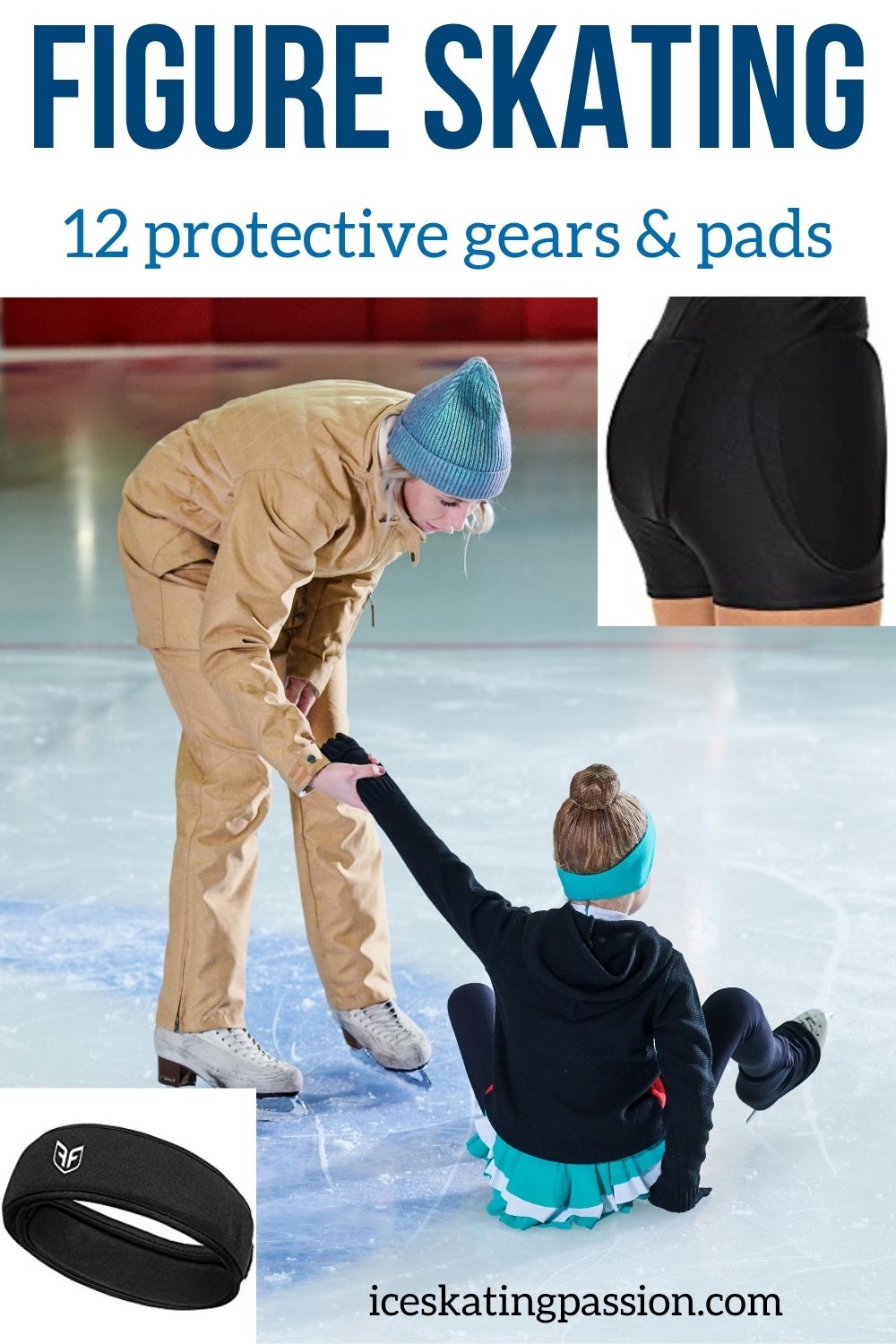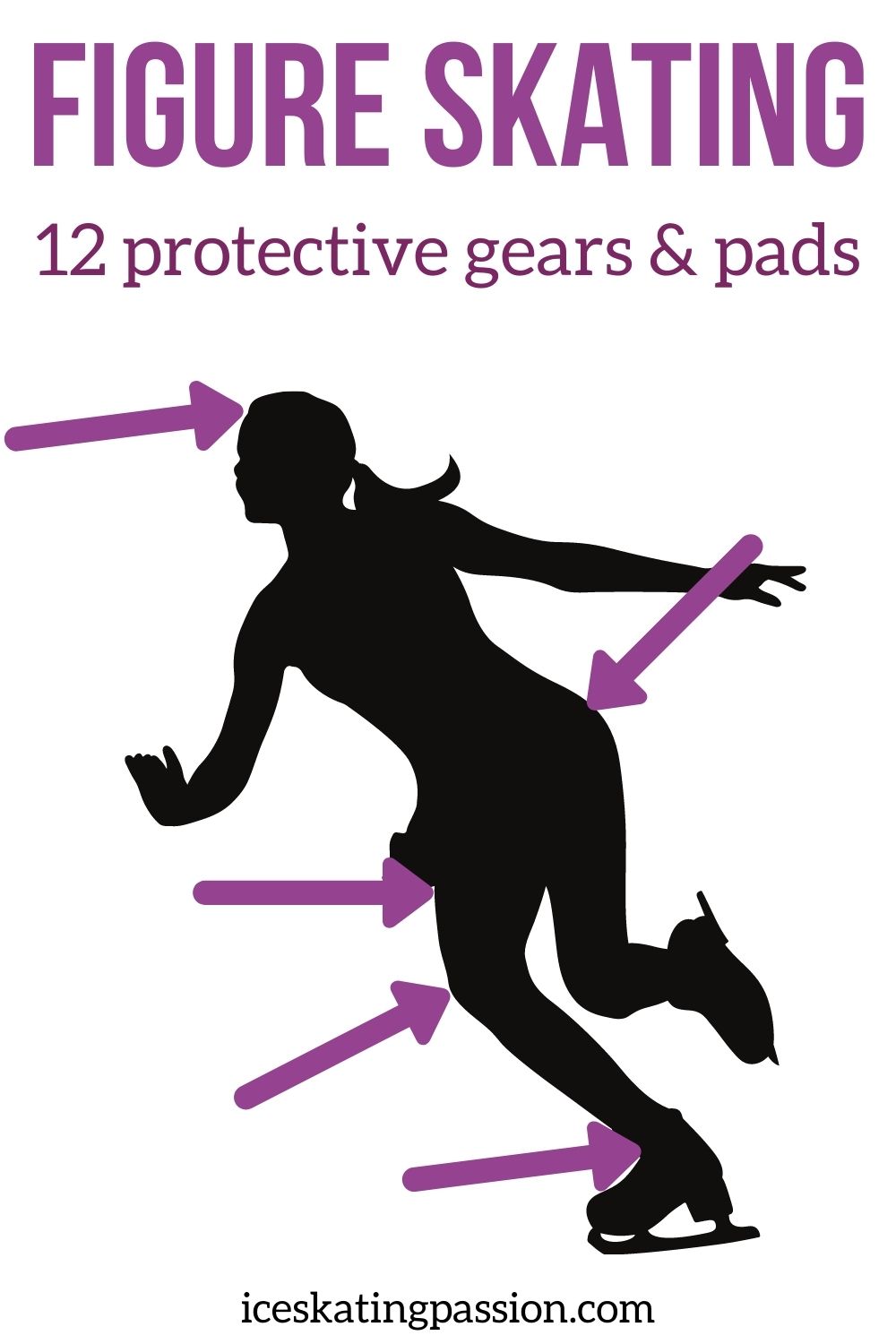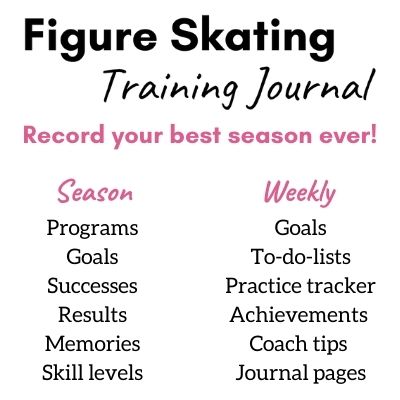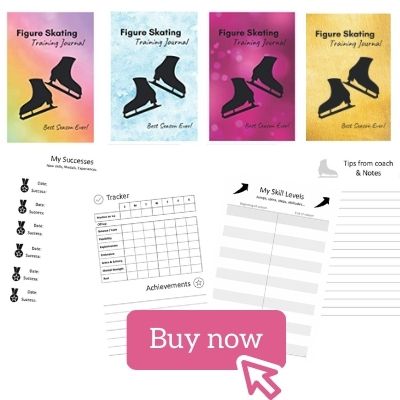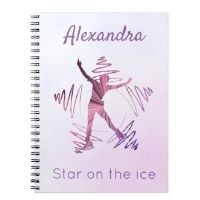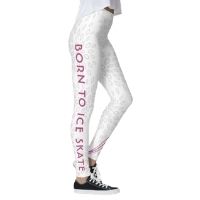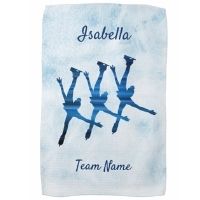Practicing new skills? That's fun, but it can also be somewhat painful because of repetitive falls. Below are 12 figure skating protective gears to consider wearing for practice : padded shorts, crash pads, headband, sleeves... to protect the most impacted body parts. Skate safe!
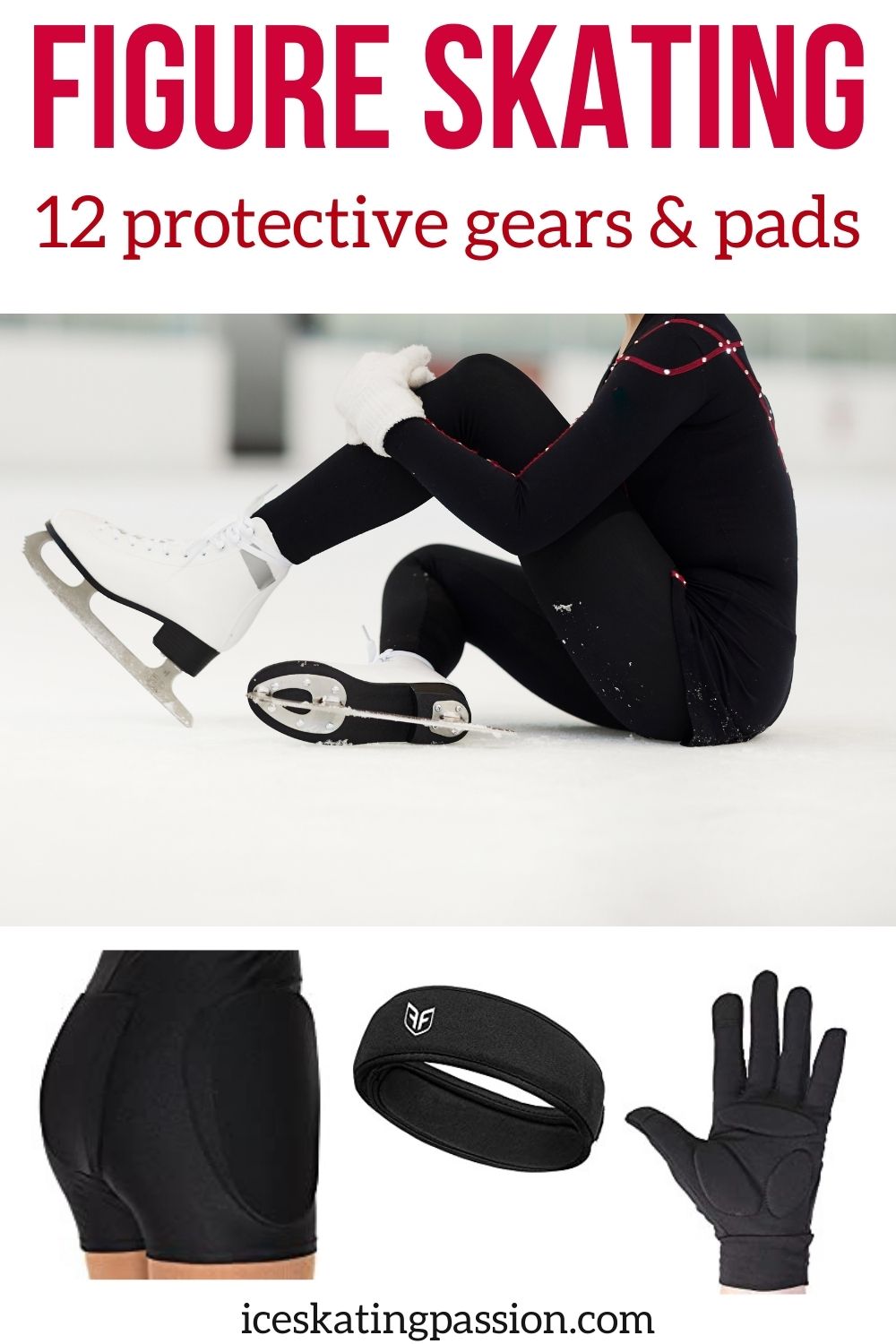
This article contains affiliate links. If you purchase using my link, I get a commission at no extra cost to you (learn more).
Why wear figure skating protective gear?
Ice skating offers lots of health and mental benefits. But it is also balancing on a thin blade on ice... falls are bound to happen.
Like a dancer, a figure skater pays attention to his/her looks, even at practice.
But considering the quantity of falls as you try mastering a new skill to reach a new level, I say let's forget vanity and wear protective gear over your training clothes!
Products have been developed specially to protect body parts that are the most at risk for figure skaters:
- the hips
- the tailbone
- the knees
- the hands
- the feet
- the head
Protection will help against:
- serious injury
- long-term issues due to repetitive injury (even small ones)
- counter-performance because of pain
Of course, protections does not mean you don't need good warm-up and focus. But they complement them.
Below are some of the best pads and and sleeves to protect yourself or your kid.

Practice - Figure skating padded shorts and clothes
Let start with some of the classic padded clothes that will protect you or your kid during the practice of skills.
Figure skating padded shorts / butt pads
Wearing a padded lycra short above tights or leggings when practicing new jumps is ideal.
It does not look sexy, agreed.
But the skater feels so much better after the training session!
It reduces the bruises and potential micro-fissure on the hip and tail bones.
Figure skating padded gloves
You often use your hands to stop a fall. They hit hard on the ice.
A solution to protect them are the padded gloves.
They keep your hands warm (like regular ice skating gloves) while protecting the most vulnerable areas of the palm with 3 pads.
Plus the material is water resistant to avoid having wet hands during practice.
Figure skating knee pads
When jumping, falls will mostly be on the side and butt, impacting the hips and tailbone. Hence the short above.
But for other moves, you may end up on your knees.
The following are made for volley-ball players who fall hard on their knees many times during a match. So, if you are practicing a special skill (or your kid) and noticing a repetitive fall on the knees, make sure to wear padded knee sleeves.
Forcefield protective headband
In any sport, one of the scariest injuries is a head one. It is rare in figure skating, but it can happen.
A helmet might be going overboard at a certain level, but it is still a good idea to increase protection.
This headband has been developed to reduce the impact on hard surfaces.
This could give peace of mind to the skater, and to the mums and dads.
Plus, it is breathable so that you don't feel discomfort when sweating.
Figure skating crash pads to protect body parts
Next stops are the pads you can place inside your clothes to protect those areas.
- Some prefer the clothes I listed above because they hold themselves up and come back in place whatever movements you make.
- Some prefer the figure skating pads below, because they have control on where to place them
Figure skating hip pads
The most commonly used figure skating crash pads are the hip pads.
Made of rubber, they impact the force during the contact with the ice.
They are thick, but this is how they protect you!
Don't forget to buy one for each hip 🙂
Figure skating Tail pad
Next are the tailbone pads. It is a same concept except it is a butt pad.
Tail bone injuries are painful and last quite long, because you are always impacting the bone when you sit. So, it is a very important area to protect.
Made of rubber, it impacts the force during the contact with the ice.
It is thick, but this is how it protects you!
Next, we look at the protective gears to protect your feet.
Figure skater feet protective equipment
We have been talking about falling a lot.
But even if you are just skating, there is an area of your body that gets many demands: the feet.
Let's face it: figure skating boots are not made to be comfortable. They try to be as much as possible, but you still need something that holds your feet and ankle well so that you can balance on a thin blade.
Friction and pressure can create bunions, tendonitis, cuts, blisters and other feet injuries.
Let's have a look at what you can wear to protect them.
Ankle and Malleolar sleeves and gel discs
For friction, some of the worst areas are the Malleolar (since they protrude) and the ankle (at the limit of the boot).
I was lucky to not have malleolar problems, but I still have a strong memory of a friend training with me with a horrible problem there that just would not go away
It that case, a gel disc or a sleeve, can help widen the area of friction and limit the injury.
The ankle, I can relate on. Especially at the beginning of the season, when you have had a break from wearing figure skates or when you are breaking new boots. Those sleeves will protect ankles from rubbing, friction, and chafing from stiff boots.
Achille Heel Pads
Another area of the feet that can get injured is the Achille heel.
Before you buy these, make sure the issue is not coming from skates that are too big. The best protection you can have for your feet are skates with a proper fit.
However, if fit is not the problem, a sleeve can reduce the friction and protect the area around the Achille Heel.
However, if you have tendonitis, make sure to discuss with a doctor and rest your feet.
Toes & Bunions
The toes of figure skaters are not as bad as the toes of ballerinas. After all, you are taking balance from your whole foot, not just your toes.
However, friction and bad socks can have an impact on the toe area with blisters and bunions.
Gels and sleeves can help protect or spread the friction area to limit injuries.
And find out more ways to protect yourself at the end of the article.
Beginner kid - Ice skating protective gear (helmets and pads)
Now, if you are on this article for a beginner kid, the options above (except for the butt pads), may be too advanced.
At the beginning, many parents opt for:
- a helmet
- knee pads
- elbow pads
- wrist protections
Other essential ways to protect the skater from injury
However, wearing protective gear is not the only way to protect yourself or your kid from injury.
Other elements of figure skating training are essentials to reduce the risk of falls and reduce the injury in case of falling:
- if the muscles are flexible
- if the muscles can hold you
- if the tendons are strong enough
The 4 main activities are:
- Warming-up before training - for your muscles and tendons to be ready before any high impact training, it is essential to warm them up progressively. Work out a plan with a coach
- Stretching after practice - skaters are normally good with warm-up but stretching after if often overlooked. Skaters are in a hurry to get home or get to school, it is thought that there is not enough time. But stretching your body after intense practice is essential for the health of your muscles and tendons
- Building core strength outside the rink - time on the ice is limited, therefore it is essential to build the skater's body outside of ice practice - especially working on core muscles that will allow better control over jumps and spins, thus reducing falls. check out my article with what to work on off the ice and my other article on the best off ice training equipment.
- Finally, a good balanced diet will keep your muscles, tendons and bones in good condition and more prepared to handle brutal shocks
You might also be interested in:
